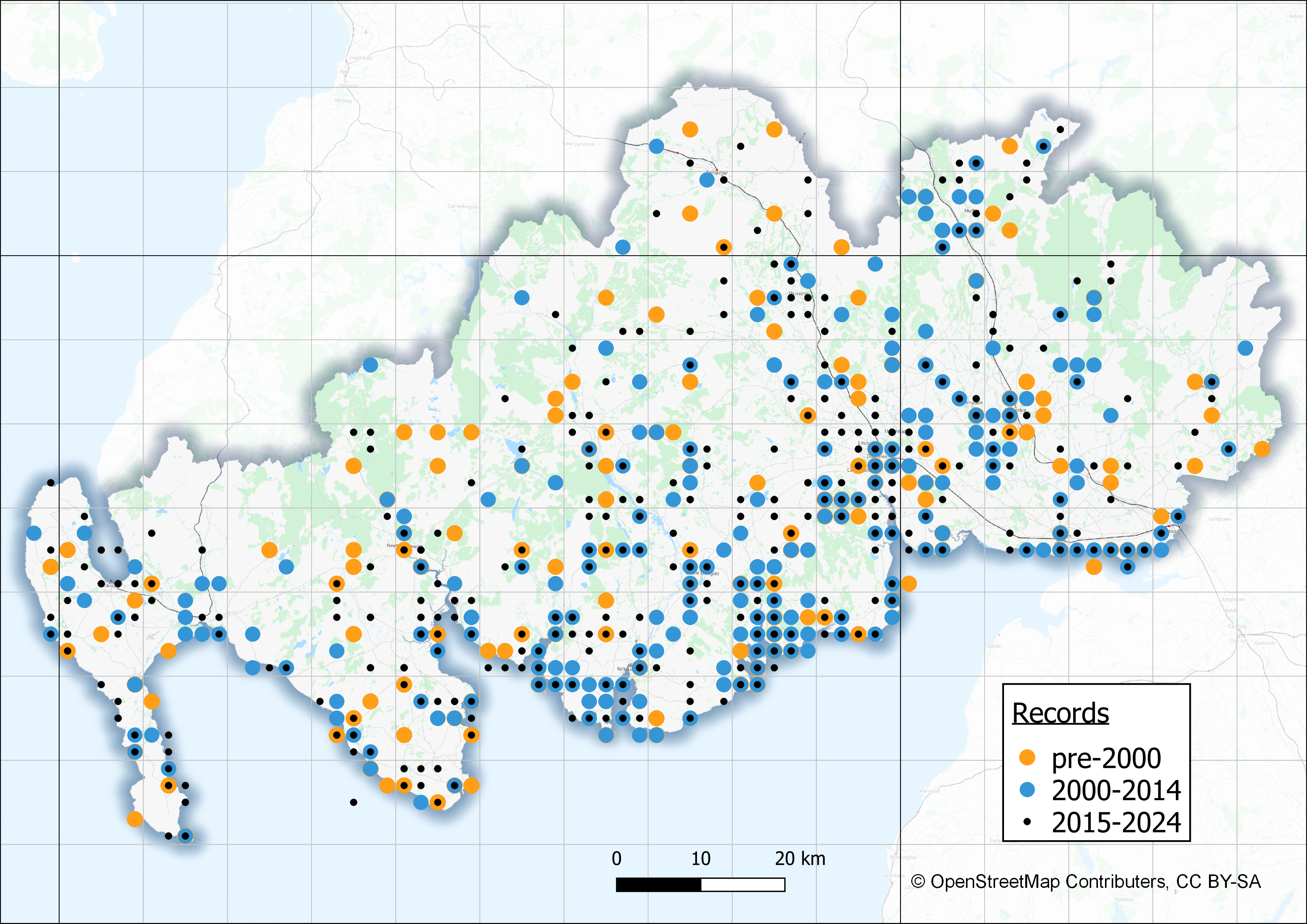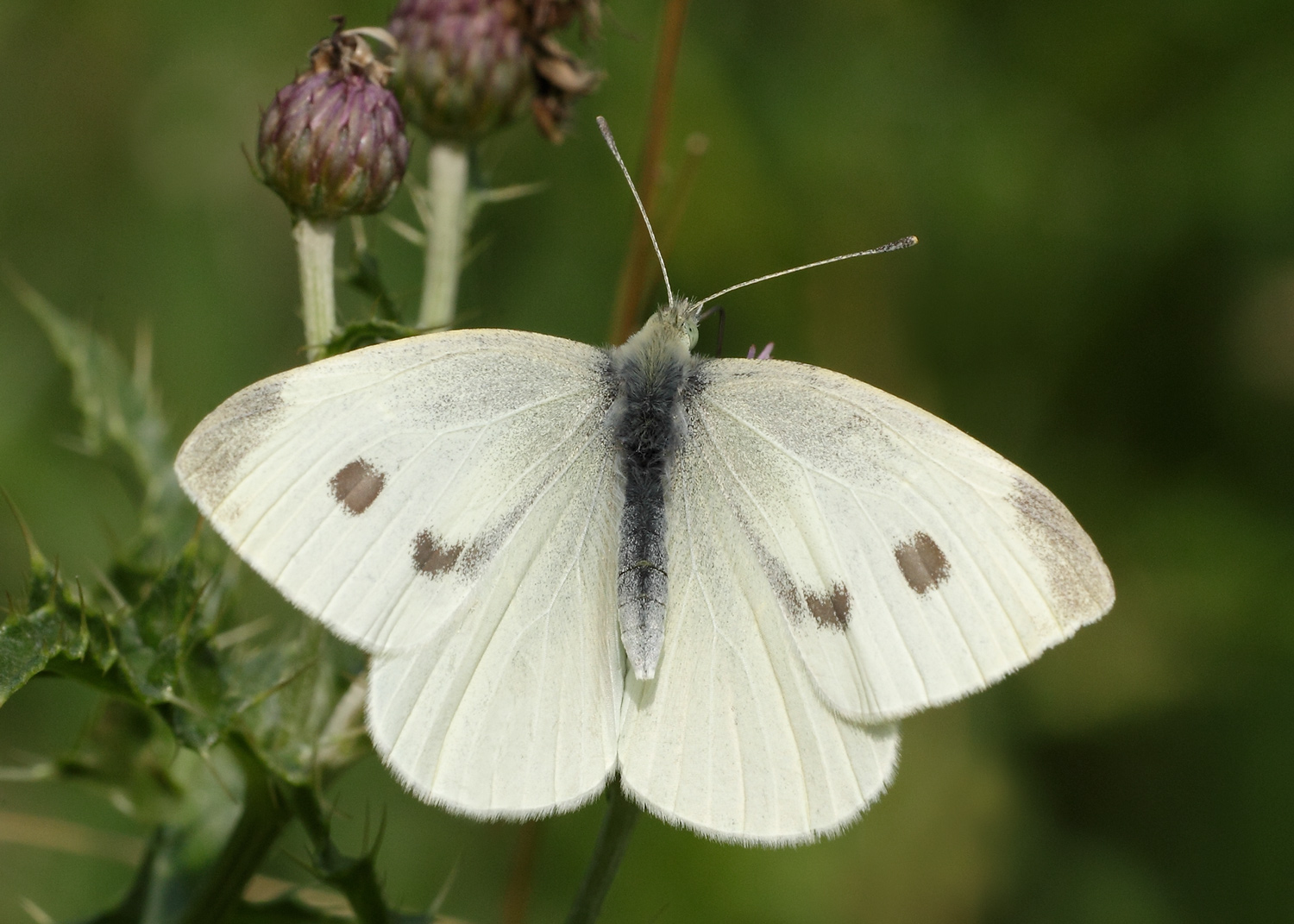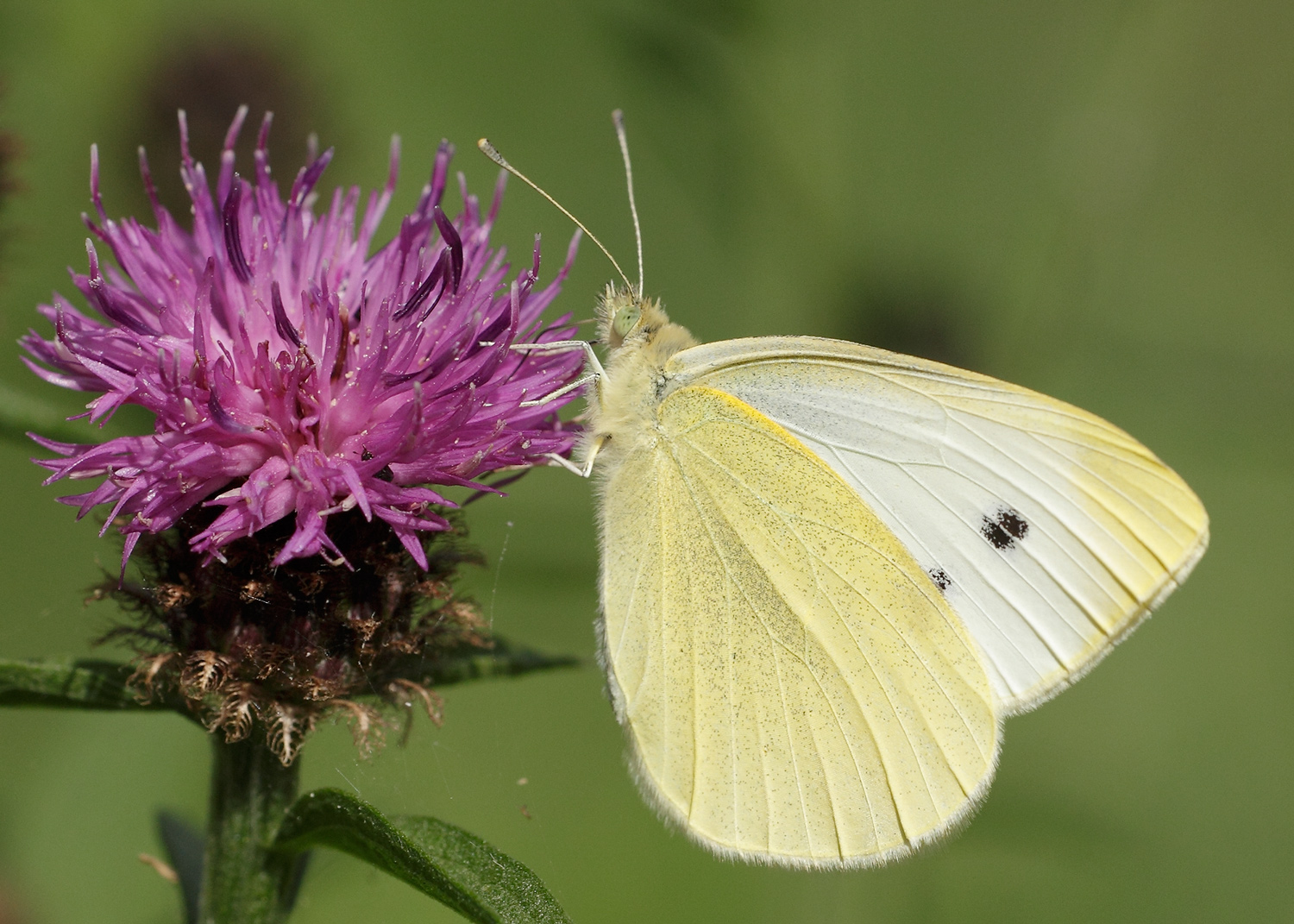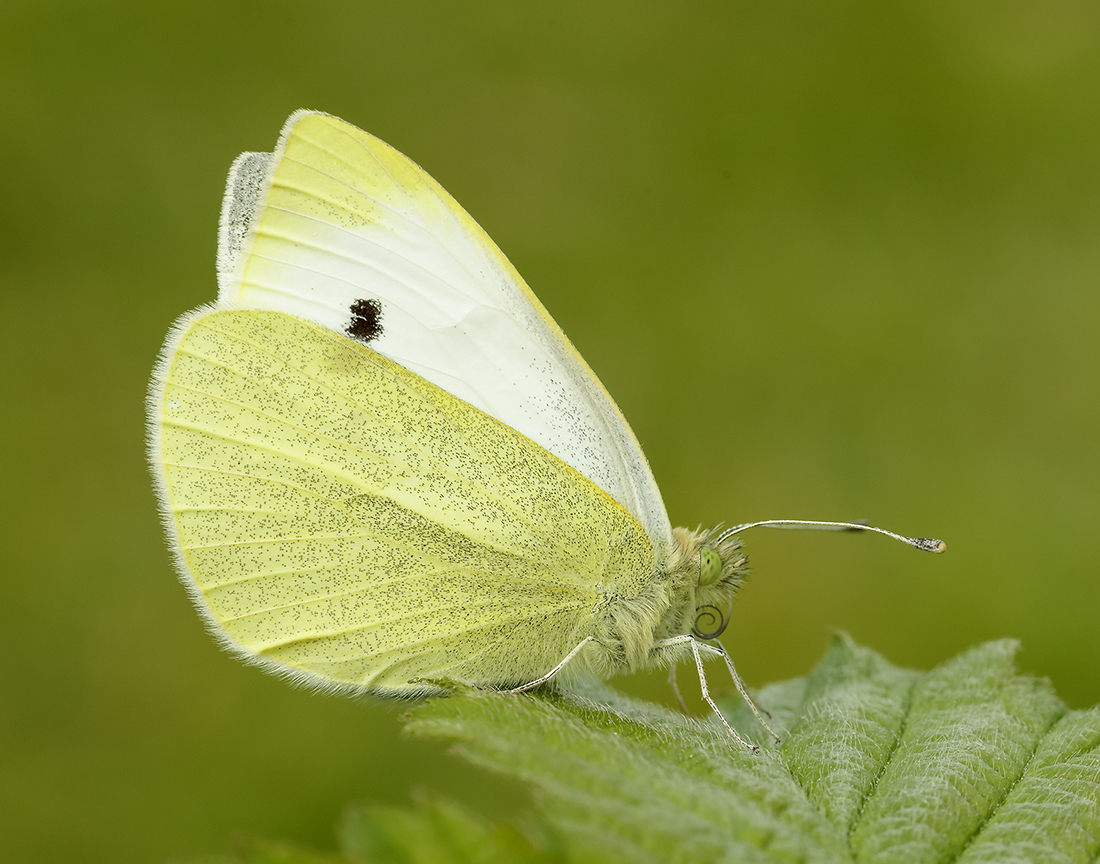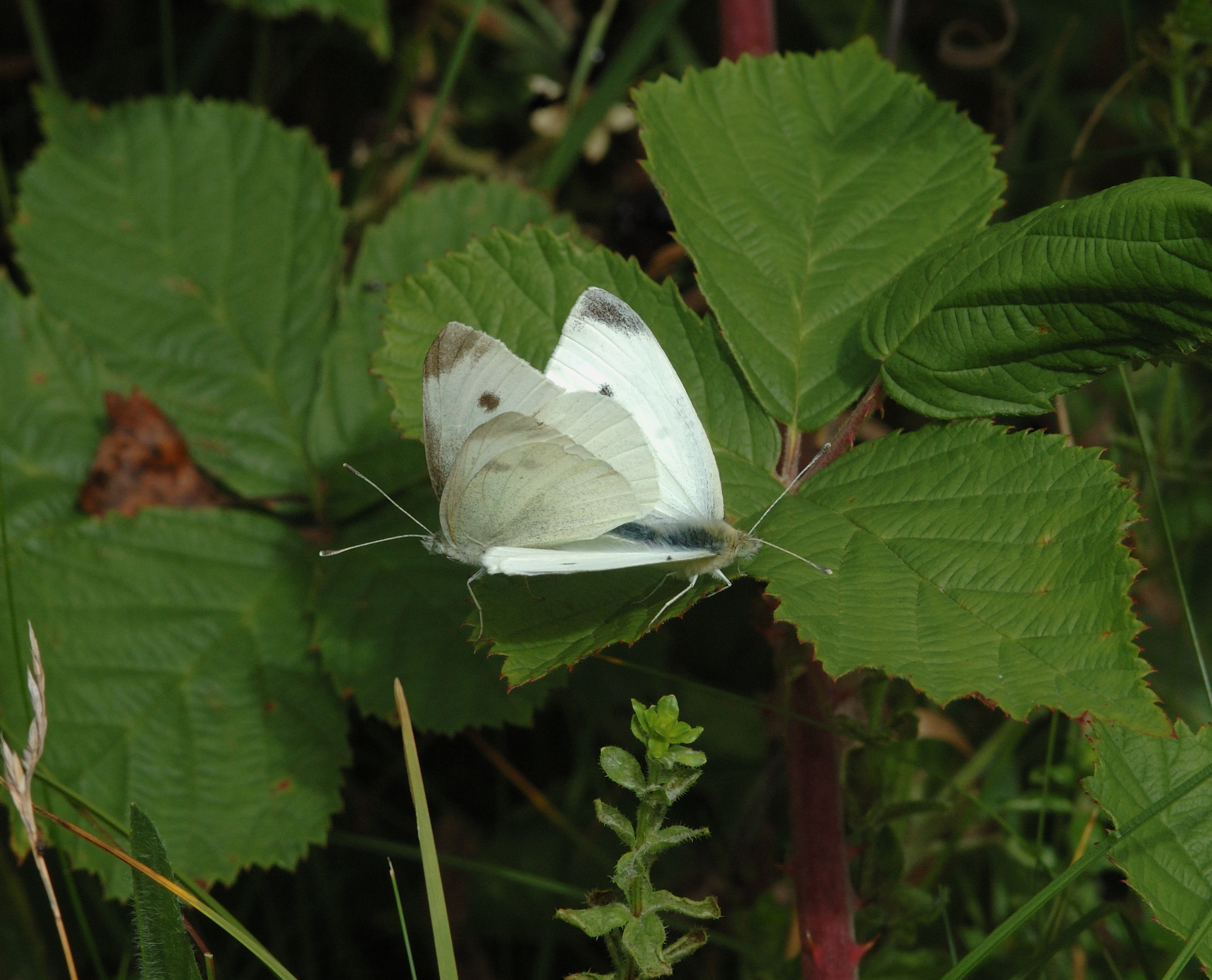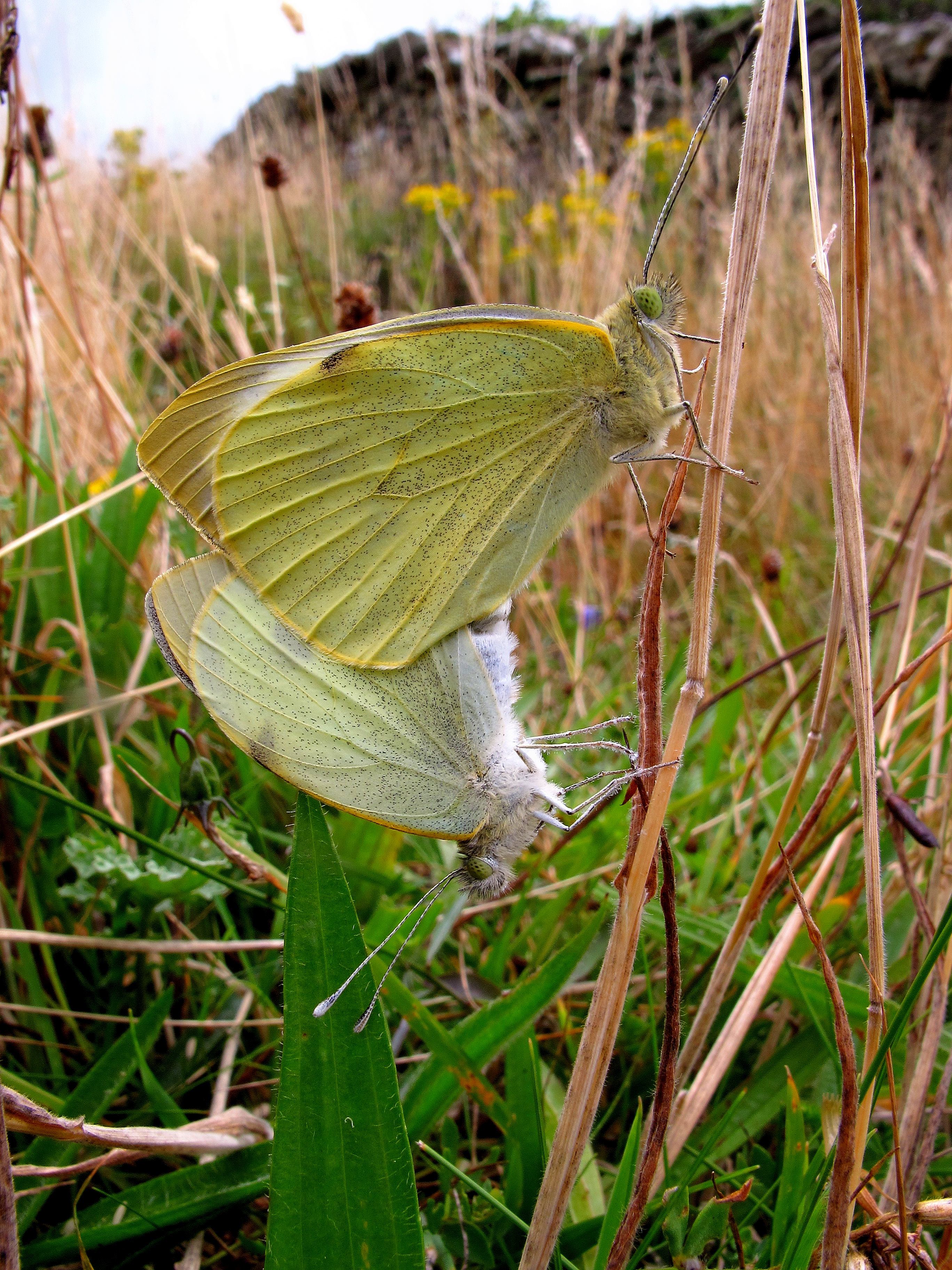Numbers and range of the Small White seem fairly stable. See most often around the coast and around settlements and arable farmland. In the uplands it is much less common, the Green-veined White usually being far more numerous.
Identification
The Whites can be tricky to separate, and Orange-tip females add to the confusion. Small Whites are usually the first to appear in the spring, but they are soon joined by the others. The Small White is most easily confused with the similar-sized Green-veined White. However, the dark veins of the latter are usually clear if the underwings are seen – this is sometimes possible even when the butterfly is flying.
Life cycle & flight period
The Small White has two distinct flight periods, April-June and July-September with two generations a year, the adults peaking at the end of April and again in mid-August. Overwinters as a pupa.
Larval foodplant
The Small White lays single eggs on Brassicas and is also known as a ‘Cabbage White’. Although the caterpillars generally cause less damage than those of the Large White, being green and with a habit of resting on the midrib, they are much less obvious to the gardener. Their cryptic strategy helps them avoid being predated as, despite feeding on similar plants, they lack the noxious taste of the Large White caterpillar and if spotted are readily taken by birds such as House Sparrows.
Habitats
It can be seen along the coastline where wild Brassicas grow, but is a frequent visitor to gardens, parks and allotments, and in the lowlands where arable crops are grown.

